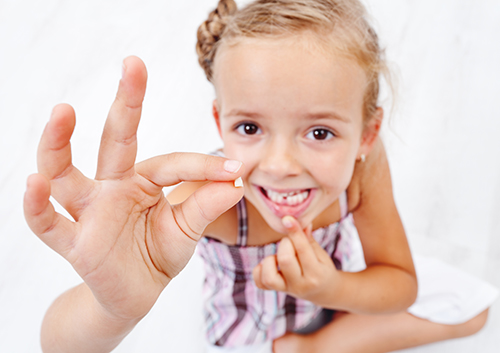May 3rd, 2016

Pregnancy can be one of the most exciting times in a woman’s life, as you eagerly wait for the birth of the new addition. Needless to say, pregnancy comes with a lot of responsibilities. Everything you do to your own body can affect your baby’s health, so you eat right and try to avoid anything that could harm your baby.
You may not realize it, but even your oral health affects your baby. You have a lot to worry about during this time in your life, but it’s important not to let your oral health slide. Maintaining good routines before and during pregnancy can improve the health of your baby.
Gum Disease and Pregnancy
Gum disease includes gingivitis and the more severe condition called periodontitis. Pregnancy gingivitis is a condition that results from bacteria in your teeth. Symptoms include gum inflammation and bad breath. If it progresses to periodontitis, your baby is at higher risk for preterm delivery and low-birth weight. You can also develop pregnancy tumors, or pyogenic granulomas, which can interfere with speaking and eating. Throughout pregnancy, continue to visit Dr. Gary Yanowitz at your regularly scheduled appointments to look for signs of gum disease.
Pregnancy and the Role of Our Office
Make an appointment with Dr. Gary Yanowitz at our Pembroke Pines, FL office when you first learn that you’re pregnant, especially if you have unresolved oral health issues. If possible, try not to schedule necessary treatment during the first trimester or second half of the third trimester.
Oral Health Care Habits to Follow
Maintain a normal good oral health care regimen, which includes brushing your teeth at least twice daily with a fluoride toothpaste and soft toothbrush, and flossing daily. If your regular regimen is not up to par, now is a good time to develop good habits. You can use an unflavored toothpaste if you have morning sickness and regular toothpaste makes you feel nauseous. Also, rinse your mouth with water or mouthwash if you experience morning sickness to prevent acid damage to your teeth.
April 26th, 2016

Dry mouth, or xerostomia, is a common side effect of many medications. It can also be a side effect of cancer treatments, or the result of certain auto-immune diseases. Dr. Gary Yanowitz and our team at Gary Yanowitz, DDS will tell you that for most people, discontinuing their medication isn’t an option. The solution is two-fold: find ways to increase saliva production and eliminate specific things that are likely to increase dryness in the mouth.
Lack of saliva creates a situation in the mouth that allows harmful organisms such as yeast and bacteria to thrive. It may also make it difficult to swallow food, create a burning feeling in your mouth, or cause bad breath, among other problems.
Medications that are known to cause dry mouth include:
- Anti-depressant drugs
- Anti-anxiety medications
- Drugs for lowering blood pressure
- Allergy and cold medications — antihistamines and decongestants
- Chemotherapy drugs
- Medications to alleviate pain
- Drugs used in the treatment of Parkinson’s disease
Saliva helps people digest their food. It also functions as a natural mouth cleanser. Xerostomia increases the risk you will develop gum disease or suffer from tooth decay.
Solutions for dry mouth
- Carry water wherever you go, and make a point of taking regular sips.
- Avoid oral rinses that contain alcohol or peroxide.
- Chew sugarless gum or suck on sugarless hard candies that contain xylitol.
- Limit your consumption of caffeine, carbonated beverages (including seltzer and sparkling waters), and alcoholic beverages.
- Brush your teeth at least twice a day, and use dental floss or other inter-dental products to remove food particles that get stuck between your teeth.
- Look for oral rinses and other oral hygiene products that bear the American Dental Association (ADA) Seal of Approval.
- Brush your teeth and use oral rinses that contain xylitol. Certain gels and oral sprays are equally helpful. Biotene is one over-the-counter brand that makes products designed to treat dry mouth.
- Make sure you get your teeth checked and cleaned twice a year. Dr. Gary Yanowitz will be able to examine your mouth for problems and treat them before they turn into something more serious.
You may not be able to solve your dry mouth problem altogether, but you’ll be able to deal with it by following these recommendations. You’ll be able to increase saliva production while reducing your risk of more serious dental problems. To learn more about preventing dry mouth, or to schedule an appointment with Dr. Gary Yanowitz, please give us a call at our convenient Pembroke Pines, FL office!
April 19th, 2016

Imagine this scenario: you go to the dentist to have a cavity filled, and an hour after the procedure you have a runny nose, scratchy throat, and your arms are breaking out in blotchy, red hives. In other words, you’re in worse shape after the visit to the dentist than you were before you walked in to have the cavity fixed. If you experience any of these types of symptoms or side effects, chances are you have a latex allergy.
What is a latex allergy?
A latex allergy is a hypersensitivity to latex proteins. If you have this allergy, the Centers for Disease Control and Prevention recommend that you avoid direct contact with any materials that contain latex. While latex gloves are known to cause allergic reactions in people with a latex allergy, certain metals, plastics, and other materials used in dental care can also cause an adverse response.
A runny nose and itchy eyes are common allergic reactions to latex. However, Dr. Gary Yanowitz and our team at Gary Yanowitz, DDS want you to know it can also trigger more severe symptoms, including asthma, wheezing, and cardiovascular and gastrointestinal ailments.
A latex-safe dental environment
Many dental offices screen patients for a latex allergy. This is only beneficial, however, if you’re already aware you have a latex allergy. The best thing you can do to ease your allergies is to find a dentist who has a latex-safe environment. A latex-safe dental environment observes the following protocols:
- All patients are screened for a latex allergy.
- No personnel use latex gloves.
- All latex products are removed from the patient’s vicinity, including rubber dams and elastics.
- Work areas contaminated with latex powder are cleaned frequently.
- Signs are posted to communicate all latex allergy procedures in case of an emergency.
If a latex allergy is part of your medical history, then it’s in your best interest to find a latex-free dental environment. To learn more about latex-free dentistry, or to schedule an appointment with Dr. Gary Yanowitz, please give us a call at our convenient Pembroke Pines, FL office!
April 12th, 2016

While the last baby teeth generally aren’t lost until age ten or 11, most children stop believing in the tooth fairy by the time they're seven or eight. Of course, children are more than happy to play along with the game when there’s money at stake! While it is impossible to know what the tooth fairy does with all those teeth (are they labeled and stored like museum pieces in a giant fairytale castle?), it is possible to trace the history and myth of the tooth fairy to several cultures and traditions. Dr. Gary Yanowitz and our team learned about some interesting myths about the tooth fairy!
The Middle Ages
Legend has it that Europeans in the Middle Ages believed a witch could curse someone by using their teeth, so it was important to dispose of baby teeth correctly. Teeth were swallowed, buried, or burned. Sometimes baby teeth were even left for rodents to eat. Despite being pests, rodents were valued for their strong teeth; it was generally believed a tooth fed to a rodent would lead to the development of a healthy and strong adult tooth.
Eighteenth Century France
The tooth fairy myth began to show more characteristics of a conventional fairytale in 18th century France. La Bonne Petite Souris, a bedtime story, tells the strange tale of a fairy that changes into a mouse to help a good queen defeat an evil king. The mouse secretly hides under the evil king’s pillow and defeats him by knocking out his teeth.
Scandinavian Lore
So, why does the tooth fairy leave money under the pillow? The idea of exchanging a tooth for coins originated in Scandinavia. Vikings paid children for a lost tooth. Teeth were worn on necklaces as good luck charms in battle. While the idea of exchanging a tooth for coins quickly spread throughout the rest of Europe, a fierce, horn-helmeted Viking is far cry from the image of a fairy collecting teeth.
While the tooth fairy as children know her today didn’t make an appearance until the 1900s, tooth myths and rites of passage have existed in numerous cultures since the dawn of time.




